Telling the tale: So as to document the ‘change’ in the lives of communities – the beneficiaries of social projects of companies and non-profits
In Focus: Young Instructor Leader (YIL) programme and Operation Vasantha by Agastya International Foundation
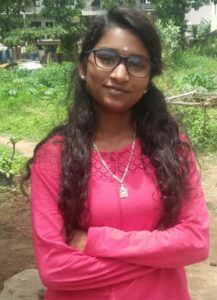 Young Instructor Leader (YIL) programme – Peer-to-Peer Teaching
Young Instructor Leader (YIL) programme – Peer-to-Peer Teaching
Basamma H, 19 years old
Pursuing mechanical engineering in Yelahanka, Bengaluru
Background
Basamma’s parents are daily-wage labourers.
‘Snacks were my favourite part at Agastya during my initial days,’ recalls Basamma, with a spark in her eyes, and narrates her story: ‘I was in class 8 at GHS-Kodigehalli when a selection process for the YIL programme was conducted by Agastya instructors. I was among the 20 students who were selected. Little did I know back then that that was going to be a turning point in my life.
‘Agastya’s YIL programme helped me to explore so many opportunities around me. One instance that vividly comes to my mind happened during 2015″16. The Agastya bus took us all to a very big campus – it was beautiful and I wondered what it was and what I was going to do there. Later they told us that it was the IIM-B campus. They taught us a lot of concepts using different activities and I gained a lot of knowledge there. Another time they took us to the TISS-Bangalore campus.’
Today, as Basamma looks back at her school life, she acknowledges that the YIL journey enhanced her leadership skills and science knowledge, along with her observation and analytical skills. She remembers: ‘It was my dream to do mechanical engineering, but during my counselling session I was told not to choose or pursue the same because “it’s not meant for girlsâ€. I just didn’t understand why and hence never accepted their ‘advice’. I told myself that I would prove them all wrong, and I did! Today, I am doing well in my studies and my family, teachers and well-wishers are very proud of it.’
Basamma, as a child, also wished to become a teacher. Agastya’s sessions (hands-on learning experience) enabled her to make this a reality. Before joining the engineering college, she had some time to spare and decided to help the Class 10 students at GHS-Kodigehalli, who back then didn’t have a science teacher. The Agastya sessions equipped her to not only teach biology but also help the children prepare for their internal examinations.
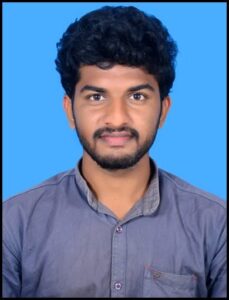 S Prasanna Kumar, 20 years old
S Prasanna Kumar, 20 years old
Pursuing B.Tech degree in Kuppam Engineering College
Background
Prasanna’s father is a stone cutter and his mother is a housewife. He has a younger brother who is a quality-testing manager and an older sister who has B.A. and B.Ed degrees.
Prasanna was studying in 6th standard when he came to know about Agastya, though as a destination for a fun trip. When he told his parents about his upcoming trip, his mother was reluctant to let him go. It took his school teachers’ persuasion and explaining the importance of him attending Agastya sessions for them to be convinced.
On his first experience of being at the Kuppam campus, Prasanna says: ‘I was fascinated.’ He particularly enjoyed visiting the chemistry lab where he worked on different chemicals and learnt the names of the elements.
Remembering another milestone occasion, he narrates: ‘When I was in 8th standard, I was selected for Intel Science Fair at the national level. I enjoyed the time we spent preparing for it. My friend and I were able to work on our idea of planting Albizia lebbeck on the sidewalks of the highway. We got this idea by observing our neighbour, who used it as a bathing soap. Later, we found that these plants offered natural benefits like curbing soil erosion and wanted to plant these on the sidewalks of roads. We shared this idea with our Agastya instructors, who worked with us for six months so we could present it at the science fair.’
The experience boosted Prasanna’s confidence and sealed his love for science. According to him, the Agastya sessions were a real-time learning process as every time he was taught a new topic, he also understood its relevance and applicability.
Prasanna went on to become a part of Agastya’s Young Instructor Leader programme and receives Rs 3000 a month, which he puts towards college fees and other educational expenses. The confidence that he acquired over time also put him on the path of entrepreneurship, even as he carries on with the engineering course.
And to think that one of their first science fairs almost didn’t happen. Not because interest was lacking, but because too many children wanted to attend. At that point, the organisation was just getting started, and had far fewer trained teachers who could demonstrate the science models and experiments. It became clear that a massive crowd would be attending the science fair – a nice problem to have, but still a problem. Quick thinking saved the event: students eager to help were trained as junior teachers. These student teachers were so effective that Agastya made peer-to-peer teaching a permanent component of its programme. The children were knowledgeable and enthusiastic, demonstrating complex scientific principles with ease, self-confidence, and obvious enjoyment. Many children took the message to heart: if other children can do this, then so can I! Thus, out of necessity – and the creative vision to recognise a good thing when they saw it – Agastya launched its Young Instructor Leader (YIL) programme. The programme harnesses the energy and enthusiasm of children who show special interest in – and aptitude for – science, math, and other key areas of study. Special classes at Agastya challenge YILs to dig deeply into the mysteries of science and math. YILs give free rein to their imaginations and creativity. They immerse themselves in a world of cooperative learning, where questions are welcomed and everyone learns. Along the way, YILs develop leadership skills and the self-confidence to be effective peer teachers at science fairs and Agastya learning centres. Peer-to-peer education has become a basic building block of the Agastya model. A foundational insight of this approach is that children learn more – and retain more of what they learn – when they have to explain it to others. They also are less timid about asking a peer to explain confusing concepts. Unlocking the innate creativity of children requires a lowering of traditional barriers between teacher and student, and of other inhibitions to learning. As a model for a more interactive way of learning, peer-to-peer education does just that. The Kuppam campus
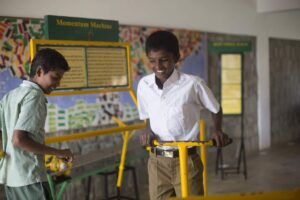 From the start, it has been Agastya’s mission to spark the imaginations of India’s rural children, using science to kindle their creativity and inquiring habits of mind. It is a challenge to reach these children in the far-flung rural villages of south India, but geography is no obstacle for Agastya’s mobile science labs, which manage to bring the low-cost experiments and hands-on learning to even the most remote communities. Meanwhile, in cities large and small, Agastya’s science fairs are a rallying point for children to see science experiments and models that demonstrate lessons and principles taught by a select team of trained and motivated youngsters.
From the start, it has been Agastya’s mission to spark the imaginations of India’s rural children, using science to kindle their creativity and inquiring habits of mind. It is a challenge to reach these children in the far-flung rural villages of south India, but geography is no obstacle for Agastya’s mobile science labs, which manage to bring the low-cost experiments and hands-on learning to even the most remote communities. Meanwhile, in cities large and small, Agastya’s science fairs are a rallying point for children to see science experiments and models that demonstrate lessons and principles taught by a select team of trained and motivated youngsters.
The 172 acres Kuppam campus in Andhra Pradesh provides Agastya with a laboratory to study ecology and carry out experiments in education. Children are bussed in for lessons in science, math and art on Agastya’s campus, which augment the curriculum in government schools. Agastya’s instructors have been able to improve upon their methods of educating children and to develop programmes for training local teachers as well. Camps are arranged for groups from schools in faraway cities, providing urban children with a rare opportunity to experience nature close up, in a rural environment. The campus also attracts teachers from private schools all over India, who come here to learn ways to infuse their own teaching with the Agastya spark.
Operation Vasantha
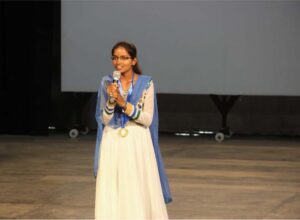 V Sandhya, 20 years old
V Sandhya, 20 years old
Pursuing B.Sc at CVRM Degree College, V.Kota
Background
Sandhya’s father is a farmer and an auto driver while her mother is a homemaker.
‘My first day at Agastya was very special to me. I was fascinated by the buildings and the environment at the campus. The first thing I did was watch a video on moral values in the Young Instructor Leader (peer-to-peer learning) lab, following which we were divided into groups to perform a hands-on experiment on a hibiscus flower,’ recalls Sandhya.
A shy and quiet child sitting in the back of her classroom, Sandhya’s experience at Agastya was a journey of exploration. As a Young Instructor Leader (YIL), she introduced experiential learning to many children in her village, organised alumni meets for Agastya, briefly taught school-dropout children as a team member of Operation Vasantha, and organised rallies to spread awareness on AIDS and the importance of cleanliness and hygiene.
In her words: ‘With my experience of facilitating and compering Agastya’s alumni meets, I don’t have stage fright anymore. I have confidence in myself that I can do anything. I have no fear in conducting seminars or explaining any experiments to my college peers.’ This confidence gave her the courage to interact with others to solve certain pressing problems in her community.
For Sandhya, Agastya symbolises a storehouse of real-life experiences and educational enhancement. One instance that she remembers as having had a huge impact on her was the Maverick Teachers Global Summit meeting. She interacted with invitees from all over the world and amassed vital life lessons through collaborating and performing experiments with them.
Now Sandhya dreams of becoming an IAS officer and serving her country, particularly people from marginalised and impoverished communities. Her experience as a community leader has led her to identify the pressing problems in society, analyse them, and solve them.
Education is the surest way out of poverty. Yet, many children in India never get the chance to take advantage of these, because their families are too poor to support them. Despite the concerted efforts of governments and civil society, many poor children drop out of school for the simple reason that if they don’t work, they don’t eat. Once a child drops out of school, it can be very difficult to return later – difficult socially, to fall behind peers who stayed in school and continued to progress through the curriculum, and difficult academically, because basic skills atrophy, and it can take considerable time and effort to make up lost ground.
Agastya International Foundation has taken up this challenge, working to bring school dropouts back into mainstream academic programmes. Agastya trains young, socially conscious volunteers – mostly college students – to go back to their home villages and tutor children who are not currently in school. Two to three times a month, the volunteers attend training workshops on the Agastya campus, where they sharpen their teaching skills and learn remedial education strategies. As an added incentive, volunteers receive a modest monthly honorarium to help defray their own educational expenses.
Each volunteer teacher takes on 20 to 30 students, holding classes for at least 2 hours a day, 6 days a week. Classes at the dropout centres typically are held outside of working hours, so that poor children do not have to choose between working to meet immediate needs and studying to improve their future prospects. Parents consent more readily to their children’s participation in the dropout programme knowing that, at least initially, they won’t lose income. Many parents are all too aware that a lack of education can trap their children in poverty, since according to an iron law of the job market: the lower the skill level, the lower the wages.
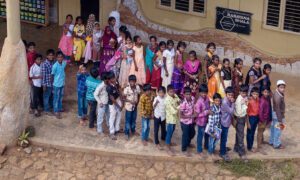
In the course of the programme, parents’ attitudes toward education may undergo a striking change; when their children succeed in their studies, parents often encourage them to return to school full-time, as an investment in the family’s future. Equally important, the children develop a love of learning, gaining confidence and self-esteem, as they become more competent learners.
This feature is part of CauseBecause’s continuing endeavour to understand, facilitate and document impact of social projects.
